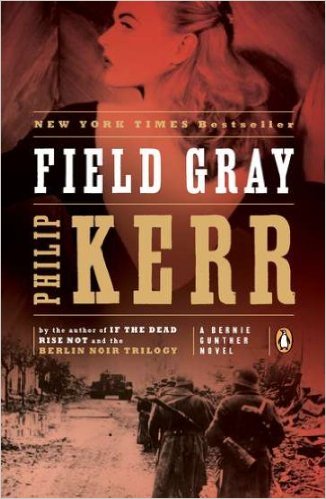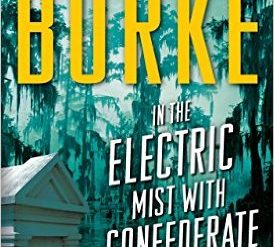Havana, 1954. This is Bernie Gunther’s story. A former German officer, living under an assumed name. A high-ranking Cuban intelligence officer has threatened to kill him unless he refuses to spy on his boss, the American gangster Meyer Lansky. Since neither alternative is appealing, Bernie has resolved to flee Cuba for Haiti. He has no sooner made his escape from the island on a powerboat than he is forced to allow the US Navy to search his vessel. There, they discover his ride-along, a young woman active in Castro’s nascent revolution, who proceeds to shoot one of the American officers. Soon Bernie is on his way to a US prison camp in New York.
A turbulent life, in flashbacks
Thus begins Field Gray, the seventh in Philip Kerr’s long-running Bernie Gunther series. How all this happens, and why, only gradually becomes clear in a dizzying series of flashbacks. The story rockets from Havana and New York to Minsk in 1941, to Germany in 1954, 1931, and then 1940, then on to France in 1940. The book continues in this vein, filling in the blanks in Bernie’s life over the course of more than two decades. In previous installments in the series, we’ve learned some of the details. Now we learn the flesh-and-blood details, often gory. Along the way we catch glimpses of several prominent historical figures in Nazi Germany, including Reinhard Heydrich, Heinrich Himmler, Arthur Nebe, and others, as well as Meyer Lansky. Even Graham Greene makes an anonymous cameo appearance.
Field Gray (Bernie Gunther #7) by Philip Kerr @@@@ (4 out of 5)
Not an easy story to tell
Bernie Gunther’s story is not easy to tell. He fought for Germany in World War I, served as a police investigator in Berlin until 1934, then became the house detective at the famed Adlon Hotel. Later, he went into partnership as a private eye. Heinrich Himmler’s notorious #2, Reinhard Heydrich, forced him back into into the police department in 1938 and then into the SS to take up a special assignment in France.
Ranked as a captain in the SS, Bernie fought on the Eastern Front in the Soviet Union. Eventually captured by the Russians, he survived a brutal year in a Soviet prison camp. After escaping, a German war criminal framed him for murders he himself had committed, forcing Bernie to flee to Argentina. There he lived under an assumed name for five years under the thumb of former SS officers. By 1954, Bernie had moved on to Cuba, where he was working in security at one of Meyer Lansky’s hotel-casinos. This is where we find him as Field Gray opens.
Bernie’s take on all this? “I’m tired of the whole damned business. For twenty years I’ve been obliged to work for people I didn’t like. Heydrich. The SD. The Nazis. The CIC. The Perons. The Mafia. The Cuban secret police. The French. The CIA. All I want to do is read the newspaper and play chess.”
Grounded in historical fact
Philip Kerr does research well. His writing about Germany in the 1930s and 40s is right on target. His portraits of the historical figures who crop up in Bernie’s story are accurate, if my own reading of history can be believed. Though the succession of flashbacks in the novel can be disorienting at times, Kerr manages to move the story along at a rapid clip. Read this book, and you’ll be guessing about what happens next all the way to the end.
For additional reading
For links to reviews of the whole series, go to Philip Kerr’s Bernie Gunther novels.
My posts 5 top nonfiction books about World War II (plus many runners-up) and The 10 best novels about World War II (plus 19 runners-up) may interest you.
You might also enjoy my posts:
- Top 10 mystery and thriller series;
- 20 excellent standalone mysteries and thrillers; and
- 20 outstanding detective series from around the world.
For an abundance of great mystery stories, go to Top 20 suspenseful detective novels (plus 200 more). And if you’re looking for exciting historical novels, check out Top 10 historical mysteries and thrillers reviewed here (plus 100 others).
And you can always find my most popular reviews, and the most recent ones, plus a guide to this whole site, on the Home Page.




























